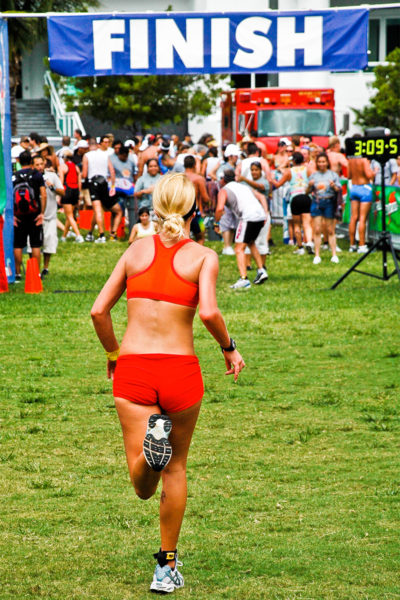As stress incontinence threatened to end Samantha’s running career, she sought answers and solutions from Dr. Karlotta Davis
As a long distance runner, Samantha had found her stride in both half and full distance marathons, competing a few times a year. After she had given birth to her first child, however, Samantha considered changing her course.
For the Denver-area nurse, running was made difficult when urinary stress incontinence – the leaking of urine when one sneezes, coughs or exercises – became routine on her daily runs.
It was very embarrassing and I wasn’t really sure that I could talk with anyone about it. I had assumed it was something that would just go away on its own. says Samathna.
 During birth, a woman’s pelvic floor – the structure that supports the uterus, bowel and bladder – is altered and stretched to allow her baby’s head to pass out of the womb and through the vagina. This process can weaken the pelvic floor, making sex less satisfying, causing pelvic organ prolapse (when the uterus, bowel or bladder “falls” and pushes against vaginal walls) or become a source of stress incontinence.
During birth, a woman’s pelvic floor – the structure that supports the uterus, bowel and bladder – is altered and stretched to allow her baby’s head to pass out of the womb and through the vagina. This process can weaken the pelvic floor, making sex less satisfying, causing pelvic organ prolapse (when the uterus, bowel or bladder “falls” and pushes against vaginal walls) or become a source of stress incontinence.
A third of all postpartum women, like Samantha, experience urinary stress incontinence. This happens because the urethra lies on a “hammock” of ligaments and muscle. If this hammock is stretched, urethral compression weakens and leaks can occur.
“I told my doctor about my condition and the fact that I had leaked urine nearly every time I went for a run. She had suggested that I use a pessary, but that wasn’t entirely effective. I also tried a tampon when I ran, but that only worked for a time as my condition continued to get worse,” Samantha notes.
She also tried pelvic floor physical therapy, however that didn’t cure her symptoms either.
Many Experience It. Few Talk About It.
Varying factors affect how and why individuals have urinary incontinence, but the basic fact remains: an estimated 25 million Americans experience symptoms.
One of the biggest misconceptions about urinary incontinence is that it’s a condition prevalent solely among older individuals.
“Twenty-five percent of female college varsity athletes lose urine when doing provocative exercise, and most do not consider it a problem; indeed, most experts would agree that these young women do not have a major health problem,” explains Dr. Ingrid Nygaard, urogynecologist at the University of Utah. “Conversely, most experts would agree that middle-aged women who lose urine throughout the day, wear pads, curtail desired activities because of leakage, and truly suffer have a disease and would benefit from treatment.”
The perception in both the medical field and among the general public that incontinence is something to be dealt with at an older age may be a primary factor why young individuals such as Samantha are hesitant to address their incontinence.
“I was reluctant to talk about it. I would ask close friends and most would say that it didn’t happen to them.”
After the birth of her second child, Samantha knew it was time to take control of her incontinence.
“I had to stop coping and start living. I didn’t want to be an old lady having to deal with the same issues for a long time.”
Getting Back to Running
Samantha met with Dr. Karlotta Davis, an urogynecologist at University of Colorado Hospital.
Working with an urogynecologist, says Samantha, validated her condition and the need to address it with medical intervention. “Dr. Davis said ‘it’s time to get this taken care of.’”
Dr. Davis explained that Samantha’s urinary incontinence was due to a hypermobile urethra: there was too much movement of her urethra, which made it drop below the pelvic floor muscles during certain activities.
To secure Samantha’s urethra, a tension-free vaginal tape was placed under her urethra – much like a sling or hammock – to maintain its normal position.
In retrospect, Samantha knows the course she took was “roundabout.” While she recovered for “a week in sweatpants” and wasn’t able to run for six weeks, she wishes that she would have done it sooner.
“Knowing the whole course I endured, it would have been best to take care of it earlier.”
Samantha is feeling great and is training again. This summer she’ll be competing in her first ever Olympic distance triathlon: that’s six miles of running and 20 miles of biking, in a swimsuit. And she won’t be worrying about incontinence at all.